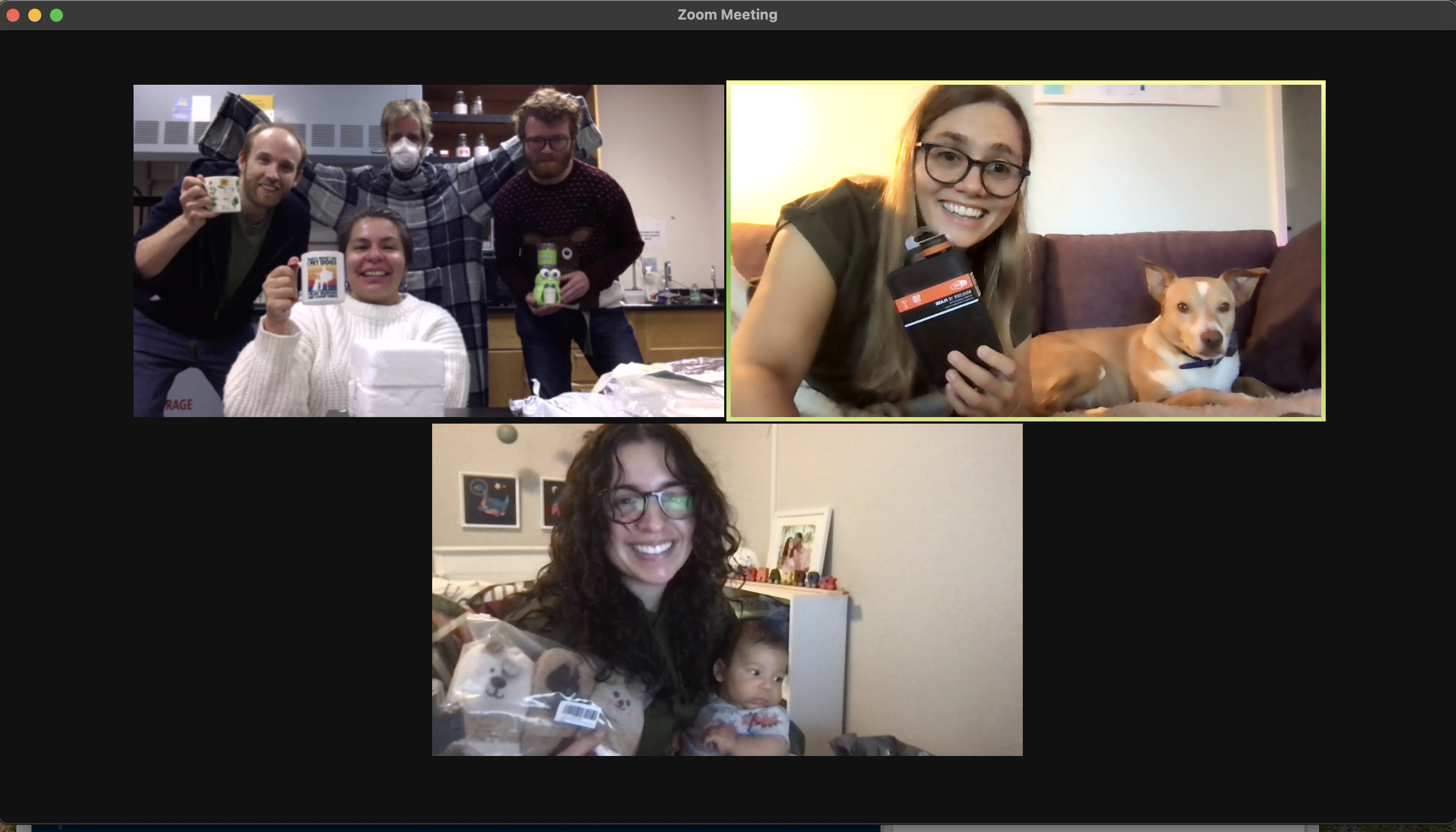Extensive Geographic Sampling Reveals Potential Role of Gifts on Facial Responses in Human Test Subjects
Methods
Six scientists (‘Secret Santas’) randomly drew (without replacement) the name of one of the other scientists (‘Santees’). Scientists were broadly distributed throughout the Pacific Ocean and the Continental United States (Fig. S1). An algorithm, DrawNames, was used to ensure that no one drew their own name (see SI Appendix for details). A gift was purchased by each participant. Each gift was then anonymously delivered to each participant’s Santee.
Upon receipt of a gift, each Santee diligently avoided opening their gift prematurely. Gifts were then opened during a special ceremony held on Dec 16th, 2021. Zoom was used to allow remote Santas to attend the ceremony. Sliver was used to make pizza.
Results
One of six Santas was unable to ensure their gift was delivered anonymously. One of six Santees reported contamination from another Secret Santa study; in this case, the contaminant gift was discarded and the protocol repeated until an uncontaminated gift was recovered. The null hypothesis that Santees would be unable to guess the identity of their Santa was rejected (p = 0.0013).
A good time was had by all (Fig. 1).
Author Contributions
IGR conceived the research; IGR conducted the experiment; IGR, CMT, JBE, DA, CJR, MRM participated in the study; MRM drafted the manuscript.
